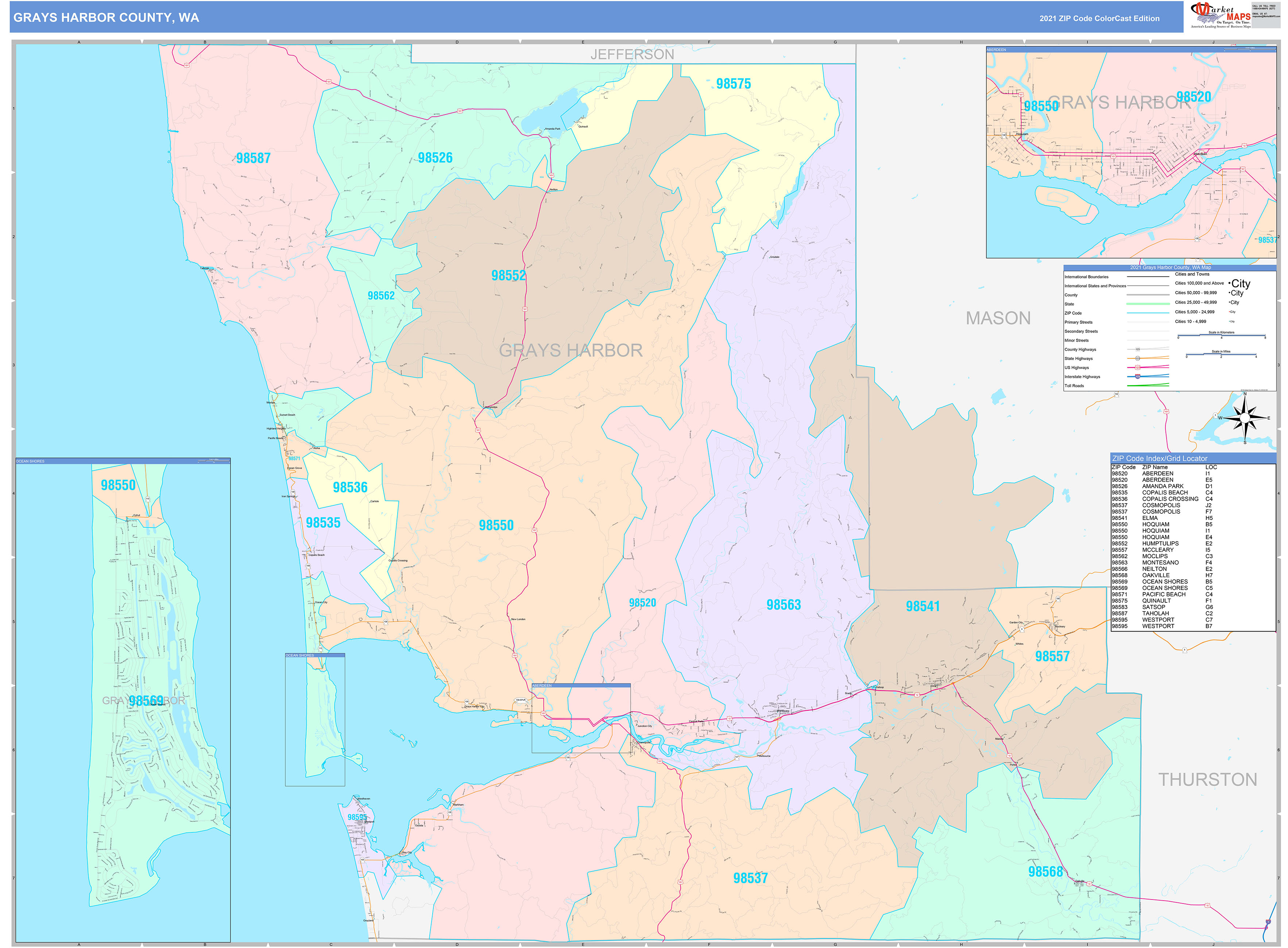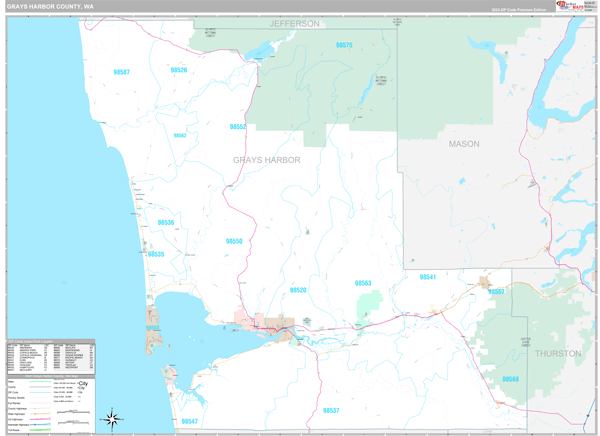
Grays Harbor County: Where the Pacific Roars and Resilience Endures
The air in Grays Harbor County carries the scent of salt, wet cedar, and something indefinable – a tang of history, struggle, and fierce independence. Nestled on the rugged Pacific coast of Washington State, where the Chehalis and Wishkah rivers meet the vast expanse of the ocean, Grays Harbor is a place of profound natural beauty and equally profound human stories. It’s a land shaped by timber and tide, by boom and bust, and by the enduring spirit of its people.
From the bustling port cities of Aberdeen and Hoquiam, often called the "Twin Harbors," to the serene beaches of Ocean Shores and Westport, and the agricultural heartland stretching inland, Grays Harbor County presents a mosaic of experiences. It’s a place where the grandeur of the Olympic Peninsula foothills melts into the wild Pacific, a testament to nature’s raw power and the human endeavor to carve a life from it.
A Foundation Forged in Timber and Tide

For generations, the heartbeat of Grays Harbor was the thud of falling timber and the whistle of steamships. In the late 19th and early 20th centuries, this region was the undisputed "lumber capital of the world." Towering Douglas firs, Western red cedars, and Sitka spruces were felled by generations of loggers, their brawn and grit fueling an industry that built cities across America and beyond. The Chehalis River and its tributaries became arteries for logs, floating them down to massive mills that lined the harbor.
"My grandpa always said, ‘We built this place with sweat and sawdust,’" reflects Sarah Jenkins, a third-generation Montesano resident whose family tree is rooted deep in the local logging history. "Every house in America, it seemed, had a piece of Grays Harbor in it. It was hard work, dangerous work, but there was a pride in it, a sense of contributing to something big."
Alongside logging, fishing and maritime trade flourished. The deep-water port became a vital gateway, connecting the Pacific Northwest to global markets. Whaling, salmon fishing, and shipbuilding were integral to the local economy, fostering a culture of self-reliance and community interdependence. The intricate waterways and vast forests weren’t just resources; they were a way of life, shaping the very identity of the people.
The Echoes of Decline: A Struggle for Reinvention
But the roar of the mills began to quiet. By the latter half of the 20th century, a confluence of factors – environmental regulations, automation, global competition, and the depletion of old-growth forests – led to a precipitous decline in the timber industry. The "boom" that had defined Grays Harbor for so long gave way to a painful, protracted "bust." Mill after mill shuttered, leaving behind rusting equipment, vacant lots, and a workforce struggling to adapt.
The economic downturn left deep scars. Unemployment soared, poverty became a persistent challenge, and a sense of being forgotten by the rest of the state settled over the Twin Harbors. The vibrant, bustling towns of Aberdeen and Hoquiam, once symbols of industrial might, grappled with the difficult realities of economic transition.
"It felt like the rug was pulled out from under us," says Mark Peterson, a former mill worker now working part-time in Westport’s fishing charter industry. "One day you had a good-paying job, benefits, a future. The next, you were wondering how to feed your family. A lot of people left, but a lot of us stayed because this is home. You can’t just walk away from your roots."
Nirvana’s Legacy: A Grungy Soundtrack to Discontent

Perhaps no single figure has put Grays Harbor on the global map quite like Kurt Cobain, the enigmatic frontman of Nirvana, who spent his formative years in Aberdeen. His raw, angsty lyrics and the band’s groundbreaking grunge sound became the soundtrack for a generation, articulating a sense of alienation and discontent that resonated far beyond the rainy streets of his hometown.
Cobain’s connection to Aberdeen is complex. While many locals express pride in his musical legacy, there’s also an acknowledgment that his art often reflected the struggles and disillusionment he witnessed in the economically depressed area. The "Welcome to Aberdeen: Come As You Are" sign, a nod to one of Nirvana’s most famous songs, stands at the city’s entrance, a bittersweet reminder of a talent that emerged from, and perhaps was shaped by, the very grittiness of Grays Harbor.
"He was just a kid from Aberdeen, but he spoke for a generation," remarks Brenda Lee, who runs a small coffee shop downtown. "His music, for better or worse, put a spotlight on the frustration and the beauty of this place. It’s complicated. We’re proud, but it reminds us of the struggles too." The Kurt Cobain Memorial Park, a small, contemplative space by the Wishkah River, offers a quiet place for reflection, drawing pilgrims from around the world who seek to connect with the origins of a musical legend.
Modern Grays Harbor: Diversification and Resilience
Today, Grays Harbor County is engaged in a determined effort to reinvent itself, building on its natural assets and the enduring spirit of its communities. While the shadows of the past remain, new industries and opportunities are slowly emerging.
Tourism has become a significant economic driver. Ocean Shores, a planned community on a peninsula, offers miles of sandy beaches, clam digging, horseback riding, and kite flying – a classic family-friendly coastal escape. Westport, a historic fishing village, has transformed into a vibrant hub for charter fishing, surfing, and whale watching, drawing visitors eager for authentic maritime experiences. The Westport Maritime Museum and the Grays Harbor Lighthouse stand as proud testaments to the region’s seafaring heritage.
The Port of Grays Harbor, once dominated by timber exports, is now diversifying its cargo, handling everything from grain and liquid bulk to large components for renewable energy projects, such as wind turbine blades. Its strategic location and deep-water access continue to make it an important player in regional and international trade.
The Quinault Indian Nation, with its reservation stretching along the coast north of Grays Harbor, plays a crucial role in the county’s economy and cultural fabric. Their tribal enterprises, including the Quinault Beach Resort and Casino, provide significant employment and contribute to the local economy, while the Nation remains a powerful steward of natural resources and a guardian of indigenous traditions.
Education and community development initiatives are also gaining traction. Grays Harbor College in Aberdeen provides vital vocational training and academic pathways, preparing residents for new opportunities. Efforts to revitalize downtown areas, support small businesses, and address social challenges like homelessness and substance abuse are ongoing, driven by dedicated community leaders and non-profit organizations.
Challenges and the Enduring Spirit
Despite these efforts, Grays Harbor County continues to face significant challenges. Poverty rates remain higher than the state average, and the opioid crisis has taken a heavy toll, reflecting issues common in many post-industrial communities. The remoteness of some areas can make access to services difficult, and the persistent damp weather can, at times, contribute to a sense of melancholy.
Yet, to focus solely on these challenges would be to miss the fundamental essence of Grays Harbor: its resilience. This is a community forged in the crucible of hard work and harder times. There’s a pragmatic realism here, a clear-eyed understanding of the difficulties, but also an unwavering commitment to community. Neighbors help neighbors, local festivals celebrate shared heritage, and a fierce pride in place persists.
"We’re not just waiting for the good old days to come back; we’re building something new," asserts John Miller, a local business owner involved in a downtown revitalization committee. "It’s slow, it’s hard, but there’s a real energy here now. People want to see Grays Harbor thrive again, and they’re willing to work for it."
A Future on the Horizon
Looking ahead, Grays Harbor County continues to chart a course for sustainable growth. Investments in infrastructure, renewable energy projects, and the promotion of its unique blend of outdoor recreation and cultural heritage are key to its future. The stunning natural environment – from the ancient forests of Olympic National Forest to the wild beauty of its coastline – remains its greatest asset, drawing those who seek connection with nature and a slower pace of life.
Grays Harbor County is not a place of easy answers or glittering facades. It is raw, real, and deeply authentic. It’s a place where the grandeur of the Pacific meets the grit of human endeavor, where the echoes of a timber-fueled past mingle with the hopeful whispers of a diversified future. It is a testament to the enduring human spirit, proving that even in the face of profound change and persistent challenges, a community can find new ways to adapt, to innovate, and to endure, as resilient and unyielding as the mighty trees that once defined its landscape.


